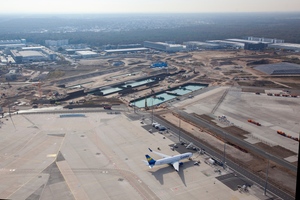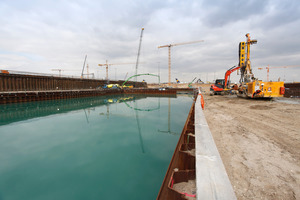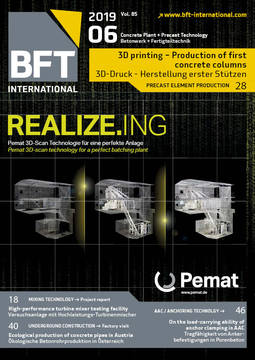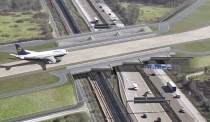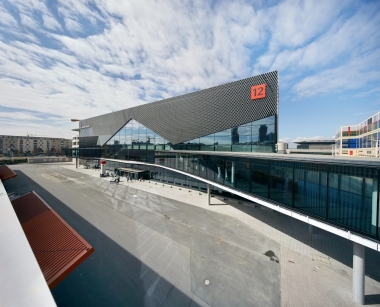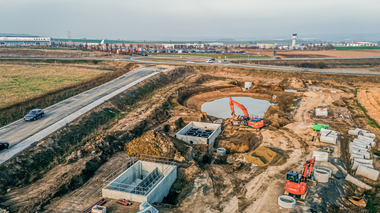Cement delivered for extension of Frankfurt Airport
The new construction of Terminal 3 at Frankfurt Airport is currently one of the largest privately financed infrastructure projects in Europe. Since the construction pit for the foundation slab is deeper than the groundwater table, the foundation slab must first be cast underwater. For construction of the underwater concrete, Dyckerhoff delivered 12,000 tons of CEM III/A 32,5 N-LH cement.
Foundation slab concreted underwater
The construction pit is nearly 66,000 m² in size, with excavation in two stages. First, dry excavation took place down to a depth of 5.5 m, just above the groundwater table. Before further excavation was possible, it was necessary to secure the construction pit and/or the individual docks with sheet piling. Subsequently, an additional 8 to 11 m were excavated to the required depth in wet construction. Following completion of the excavation work, a total of 3,500 buoyancy anchors, generically known as micropiles, were installed. These will later serve to guard against uplift of the underwater concrete foundation base.
The underwater works were carried out by industrial divers. Poor visibility is one of the greatest challenges that face the divers. Visibility below water is less than one meter, even if the water is cleaned by special methods from the sand and sludge whirled up due to construction activities. Tactile perception and hearing as well as good communication with colleagues above the water are therefore especially important.
Around 20 silo trucks daily from Wiesbaden
Before starting underwater concreting, industrial divers level the ground to ensure that the foundation slab is cast to uniform thickness. This procedure sucks up sand and sludge using a special kind of vacuum cleaner. The concrete is installed with pumps. This work is also performed by the divers: they check whether a level surface has been created. Following about five weeks of hardening, the water can be pumped out of the pits and the foundation slab cleaned. The pumped-out water is cleaned on site and returned to the groundwater at the airport through a special infiltration system. The construction pit is prepared in sections and subsequently cast by the industrial divers. In this way, short casting sections are completed at extremely high levels of daily progress. Therefore, the cement quantities delivered by Dyckerhoff vary greatly; at times, some 20 silo trucks leave the Dyckerhoff headquarters in Wiesbaden, Germany, every day. Deliveries started in March 2019.
The total amount of around 40,000 m³ of concrete required for construction is produced by the company Sehring Beton, in a mobile mixing plant erected directly on site. The construction work is carried out by the joint venture Arge Ingenieurbau Baugrube T3, consisting of the companies Adam Hörnig Bau and Bickhardt Bau. The site on which Terminal 3 is now being erected has an eventful history. In the years from 1945 to 2005 it was used by the US Air Force and was at the time the largest military airport outside the USA. The official construction permit for building Terminal 3 was awarded in 2012. Christoph Mäckler Architekten from Frankfurt am Main designed the terminal.

